Mimosa bashful - an unusual houseplant from the tropics
Mimosa is one of the most mysterious and unusual plants. Florists grow mimosa not only because of its tenderness - it is known for being able to move the leaves, fold and unfold them. Children are especially fond of watching the show.
Moreover, the plant pleases the eye with fluffy and touching inflorescences. They decorate any room or greenhouse. Mimosa is famous for the fact that it looks favorably against the background of white materials or light floral arrangements. Growing a miracle of nature is not difficult. However, for this it is necessary to create certain conditions. The information will help the grower properly prepare the soil for the plant and successfully grow the touchy mimosa.
Content:
- Description of the plant
- We create growing conditions
- Planting mimosa
- Proper care is the key to lush flowering
- Reproduction of touch-me-nots
Description of the plant
Mimosa is often confused with silver acacia - these are the branches that are usually given to women on March 8. However, the real mimosa has nothing to do with acacia and looks completely different. The homeland of the plant is South America, Brazil, East Asia and Africa. Mimosa grows on sunny hills in the humid tropics. It envelops quite large areas in wild habitats.
Mimosa is a shrub, tree or herbaceous plant, depending on the species and location.
Belongs to the subfamily of mimosa. There are about 500 species. It is grown as an annual plant, as it loses its decorative effect over time.
Features of the structure of mimosa:
- Greens form two-leafed leaves, the surface of which is equipped with receptors. Thanks to them, the plant senses danger and folds the leaves - they close.
- Mimosa blooms in small inflorescences, collected in ears or bunch, head.
- The color of flowers is often pale purple with a pinkish tinge.
- In height, mimosa can reach one meter, some species stretch even higher.
Mimosa is very fond of sunny color and high humidity. The cultivated type of plant is Shy Mimosa - it is she who is grown everywhere at home or in the open field, if climatic conditions permit.
The leaves' ability to respond to changes in the environment has become the number one reason for growing mimosa. It is interesting to observe how the leaf quickly folds up and also quickly unfolds. However, if the plant lives for more than a year, this ability is gradually lost, the reaction process slows down.
We create growing conditions
Since the plant is native to the rainforests of South America, it needs to create similar growing conditions... Mimosa loves high humidity, warmth and sunlight. It is not recommended to plant the plant outdoors even in the south of Russia. Therefore, mimosa is often grown at home.
In the room where it is planned to place a flowerpot with mimosa, sunlight must be constantly present. The plant can easily tolerate direct sunlight. However, young sprouts are taught this gradually.If there is not enough light in the room, the mimosa will not grow, shed its foliage and die. Choose a room with a south or east direction.
It is necessary to constantly maintain high humidity in the room with the help of regular sprinkling and glaze.
Dry air can kill the touchy. Good drainage must be placed in the pots; a layer of expanded clay can be laid on the pallet, which will retain moisture. Many people put a pot of mimosa in moist peat with the same purpose - to retain moisture.
The temperature regime for the plant should be strictly observed, otherwise it will drop foliage and will not grow. In summer, the air temperature should be 22 ° -26 °, in winter, the minimum is 15 °, and the maximum is 22 °. If the temperature does not match, mimosa can get sick and die. To grow a plant, all conditions must be observed, otherwise the shy beauty will not please with flowering.
Planting mimosa
Recommendations for planting plant seeds:
- For planting seed use small containers with a diameter of 9 cm.
- They are filled with a substrate of equal parts of leafy earth, humus, sod soil and a little sand - half of one part.
- It is desirable to disinfect the substrate. Spill the soil with potassium permanganate solution.
- Place drainage on the bottom of the container.
- The seeds are usually not buried, but pressed against the substrate.
- The container is covered with foil and placed in a warm room.
It is necessary to monitor the appearance of sprouts under the film. As soon as they appear, it is advisable to ventilate the container, that is, open it for about half an hour. The measure will prevent the appearance of a black leg, so loving young shoots.
The seeds germinate in about 7-8 days.
Mimosa germination is high. It is rare that the inoculum does not give results. This usually happens when the wrong storage seeds. When two full-fledged leaves are tied on the sprout, it can be transplant in a permanent flowerpot with the same composition of the substrate. Only the components should already be in equal proportions. The sprouts are gradually accustomed to sunlight. Exposed to open beams for a certain period of time and again removed to a shaded place. Make sure that the leaves do not get burned. Mimosa grows rather quickly, it needs to create all the conditions for this, in particular, proper care.
Proper care is the key to lush flowering
After planting mimosa in a permanent pot, you should feed plant. Complex used mineral fertilizers for flowering plants. Dilute it twice as much of the dose indicated on the package. Be sure to moisten the soil before fertilizing, otherwise root system may get burned. The first feeding is carried out immediately after planting, the second and further every 2-3 weeks until August.
Watering mimosa:
- Throughout the growing season, mimosa should be watered abundantly, but not overfilled. Excessive watering, as well as overdrying the earthy coma, will lead to the death of the plant.
- Watering carried out as the upper layer of the substrate dries.
- In addition to timely soil moisture, mimosa welcomes sprinkling procedures. They are held once a day in the summer.
- For watering and spraying use only settled water at room temperature.
Mimosa does not like drafts and temperature changes. The plant can get sick and shed its foliage. Don't overdo it with leaf-rolling games. If you very often imitate the danger to the plant, it will weaken, it will grow and develop poorly. You also need to monitor faded inflorescences and fallen leaves. The fact is that during flowering, a lot of debris is formed - pollen, flowers, leaves. All this can provoke an allergic reaction, if there is a tendency to this. Therefore, remove the trash after the beauty, so as not to start sneezing and crying from the abundance of pollen.
Reproduction of touch-me-nots
Mimosa is propagated seeds or cuttings... The first method is the most common, as the plant produces seeds with ease. All that remains is to collect them in late summer or autumn. Reproduction by cuttings occurs less often, since they sometimes do not take root. It is more expedient to purchase seeds or collect them from an already adult plant.
Seed material is stored all winter until April - planting pores seedlings mimosa. The collected material is disinfected with a solution of potassium permanganate, dried and removed to a dark place for storage... Many growers soak the seeds before planting. So they sprout faster and better. Cuttings are cut from an adult plant - its upper shoots. They do it in the summer. This is usually the preferred procedure for growing plants in greenhouses where growing conditions for mimosas are maintained at all times.
At home, the seed propagation method is more often used.
If the plant has already been purchased in the form of a young sprout, do not rush it transplant... It must adapt to temperature and humidity. Planting of an already germinated cuttings is carried out in April or May. For the substrate, a mixture of leaf, sod land, peat and sand in equal proportions is used. The sprout is transplanted by the transshipment method so as not to damage the delicate root system. It is quite easy to grow a touchy one if all the growing conditions are met.
More information can be found in the video:



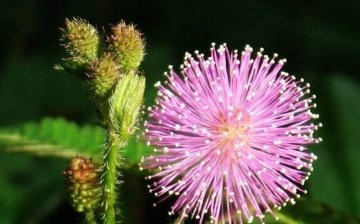
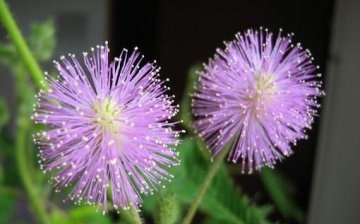
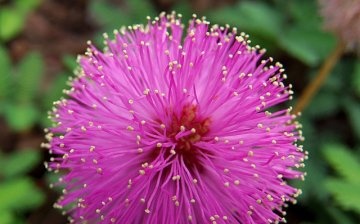
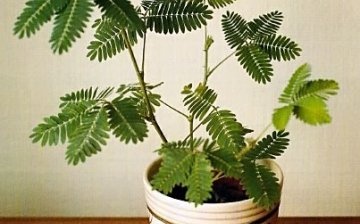
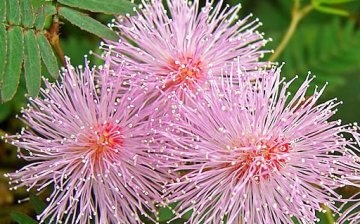
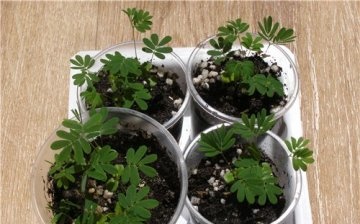






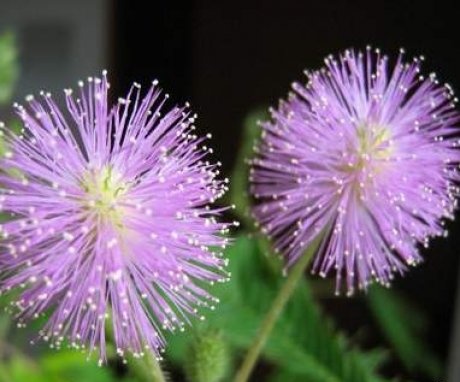
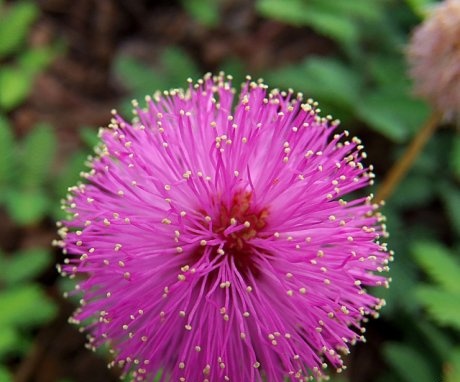
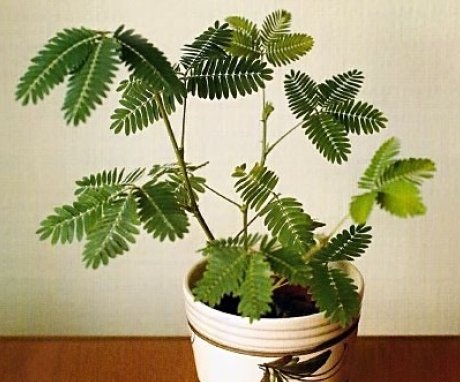
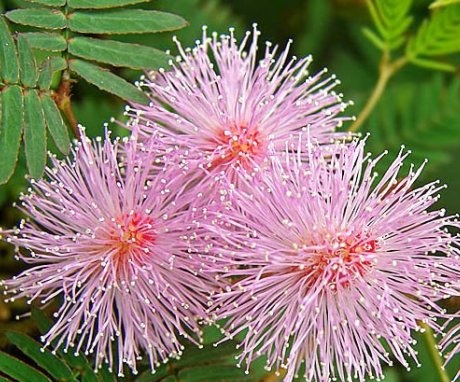
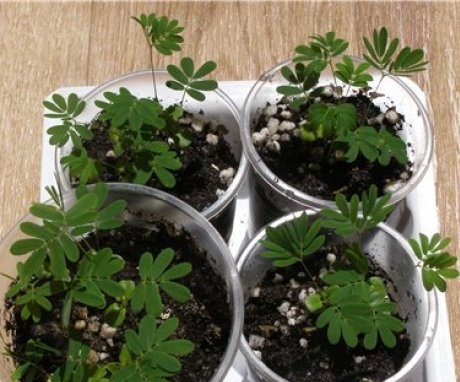
It is a pity that it can only be kept at home, that some kind of special care is needed, which a beginner cannot afford, except to try very hard. I think that this plant is not suitable for those who are short on time. Right?